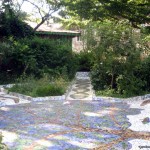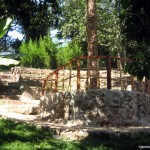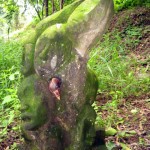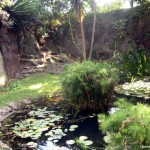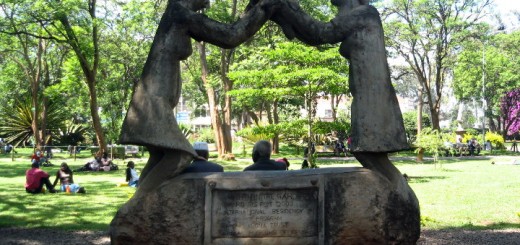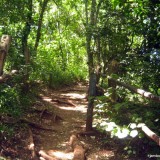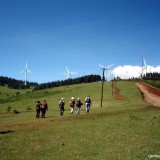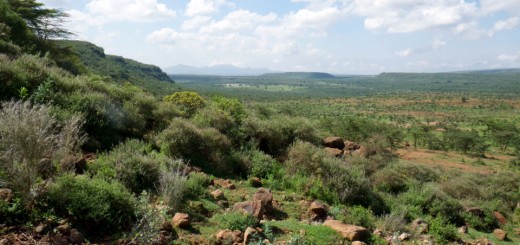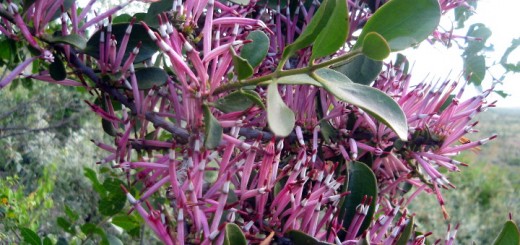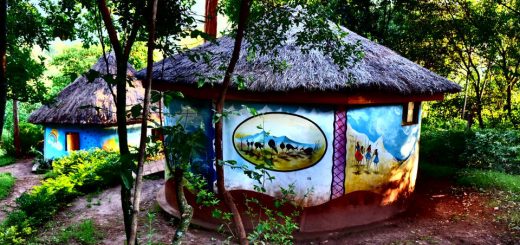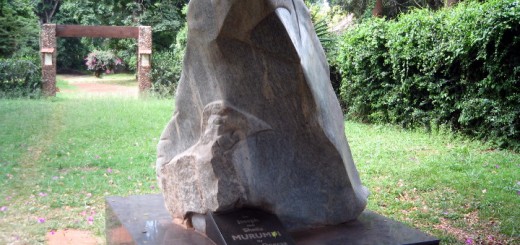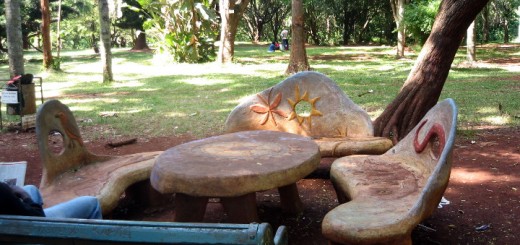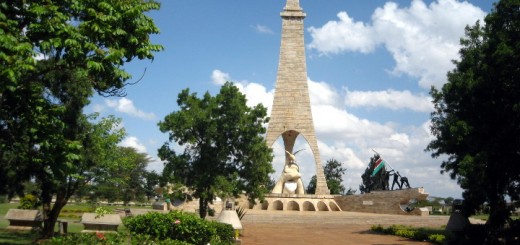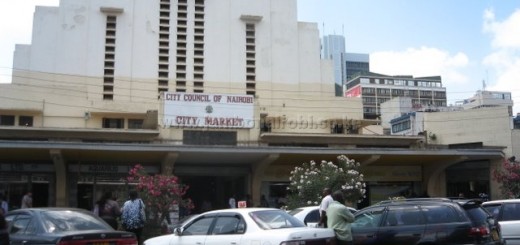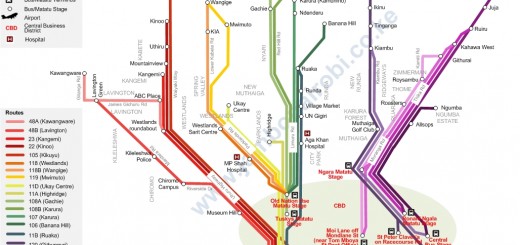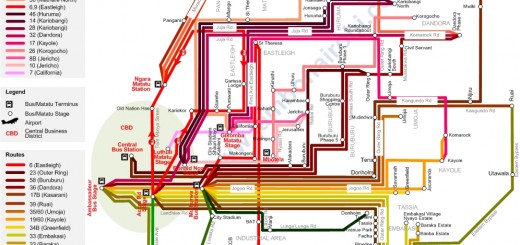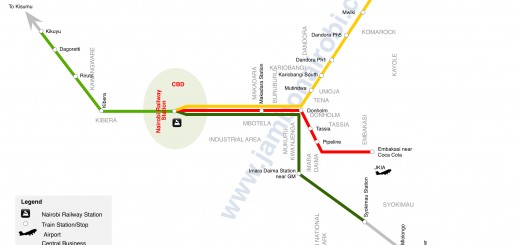Nairobi Botanical Garden
The Nairobi Botanical Garden is a little know strip of green space nestling between the Nairobi National Museum buildings and the Nairobi River, about 10 minutes walk from the Central Business District (CBD). A nature trail meanders through the gardens, framed by curious looking garden sculptures that invite you to ponder over their form and significance. The well-maintained lawns on the gardens, both under shade and in the open, offer a welcome respite from the daily grind of city life.
The Nairobi Botanical Garden is a project of the National Museums of Kenya (NMK) that seeks to showcase the diversity of vegetation in Kenya. To this end, the NMK have organized the garden into thematic displays highlighting different classes of plants found throughout Kenya.
- Herbal Garden
- Statues at the nairobi botanical garden
- Amphitheatre at the Childrens garden
- Interesting statue of faces
- Pond at the quarry garden
Thematic Garden Displays
The Botanical Garden has eleven thematic displays , with five more planned for introduction as funds become available. The list below describes some of these sections.
Grass garden; the all-pervasive nature of grass may have contributed to the perception that these type of plants are dull and uninteresting. If you stop to consider some of the most common and popular foods and drinks we partake, I’m sure many would agree that this class of plants is indispensable in our lives. For one, our staples like maize and wheat falls under this class, and so does barley, the main ingredient for making beer, Kenyans’ favorite alcoholic beverage. The movements of the nomadic communities in Kenya are dictated by the availability of grass for their livestock, and they will sometimes drive their cattle hundreds of kilometres in search of green pastures.
Herbal garden; perhaps the most striking garden display, it is laid out in a circular plan with beautiful footpaths fanning out from the centre, decorated with ceramic mosaic patterns of plants and animals. This garden showcases Kenya’s indigenous medicinal and food plants, to help promote their conservation for posterity.
Succulent Garden; complete with a rocky landscape, this garden is a microcosm of the ecosystem found in eighty percent (80%) of Kenya’s land, classified as arid and semi-arid. With over 350 succulent plant species found in Kenya, this garden is representative of a significant part of Kenya’s biodiversity and serves to educate visitors on the unique adaptations of these plant species to the dry conditions of their habitat, and their usefulness to the local communities.
Quarry Garden; a pond, the main feature of this garden, supports a rich assortment of papyrus plants, water lilies and other water plants that have made it a haven for frogs, insects, fish, birds and other water loving animals. It is an interesting stopover as you tour the botanical gardens.
Orchid House; this features the most comprehensive collection of Kenyan orchids. Orchids’ beautiful and sometimes strange looking flowers make this a worthwhile place to visit. Advance booking is required to access the Orchid house.
Memorial Garden; this garden is dedicated to the memory of the casualties of World War II, possibly the most tragic conflict in the history of human civilization. The Rosemary plant, the traditional symbol of remembrance, features prominently in this garden, among other aromatic plants.
Wooded Garden; this section showcases the indigenous trees found in Kenya’s forests, and provides a pleasant environment for resting.
Children’s Garden; with an amphitheater setting and open lawns, this space is ideal for learning through lectures, and playing. Both indigenous and exotic plants have been planted here for a variable flowering cycle.
Cycad display; these plants, considered to be the oldest surviving seed-bearing plant species on the planet, having existed from the age of Dinosaurs, are rare tropical plants existing in some regions of Kenya. The mountain top environs of Mt Ololokwe, Mathews Range and Ndoto Mountains in the northern frontier districts of Kenya are some of the areas these plants exist to date. However, they are classified as endangered, so NMK has planted them in the botanical garden to raise awareness of their status, and the need to preserve this precious heritage.
Getting There
If walking from the CBD, take Harry Thuku Road off University Way and go past Central Police Station, University of Nairobi Main Campus, Fairmont Norfolk Hotel and Boulevard Hotel to the Interchange at Museum Hill. Turn right and walk 200m to the National Museum Gate. The Nairobi Botanical Garden is within the Museum grounds.
If driving from the CBD, use Uhuru Highway to the Interchange at Museum hill. The National Museum is to your right.
Entry Requirements
Free entry.
